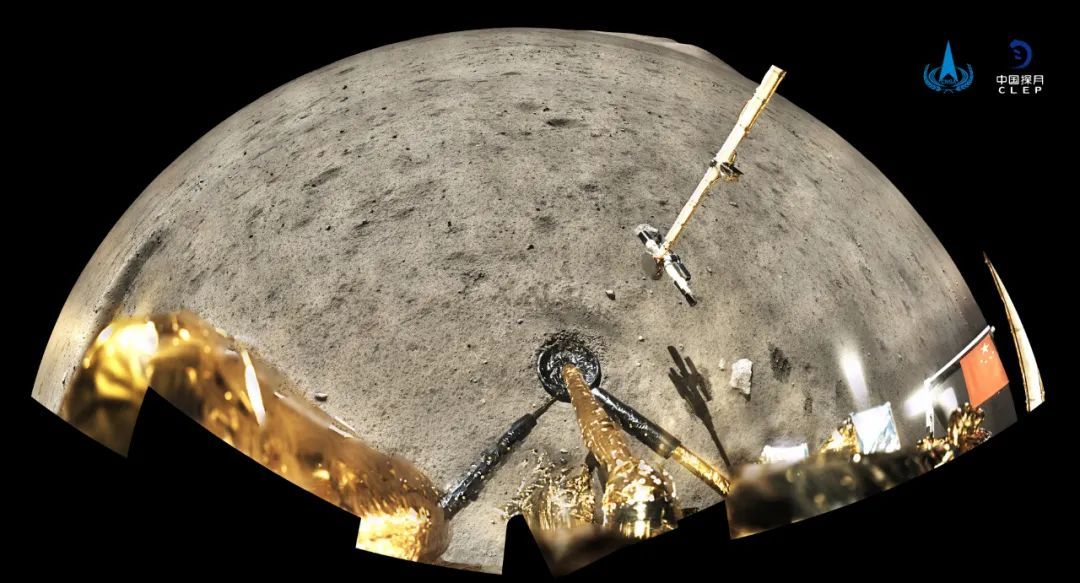
HELSINKI — NASA-funded researchers have been granted permission to apply for access to China’s Chang’e-5 lunar samples in an exception to a prohibition on bilateral activities.
An internal email sent Nov. 29 informed NASA researchers that they would be able to apply to the China National Space Administration (CNSA) for access to portions of samples collected by China’s Chang’e-5 mission.
“NASA has certified its intent to Congress to allow NASA-funded researchers to apply to the China National Space Administration for access to lunar samples returned to Earth on the Chang’e-5 mission and made available recently to the international scientific community for research purposes,” the email read.
The move opens the rare possibility of cooperation between China and NASA-funded entities and researchers. It also comes despite NASA Administrator Bill Nelson’s strong rhetoric towards China and his stated support for maintaining ongoing restrictions on collaboration.
The “Wolf Amendment” is a provision in annual NASA appropriations bills which heavily restricts bilateral cooperation with entities of the People’s Republic of China. Any NASA-funded individual or entity seeking to engage in bilateral activity would require a prior written request to, and granted permission from, Congress in advance, along with certification from the FBI that the activities would not pose a national security risk.
China launched its Chang’e-5 mission in late 2020. The complex, four-spacecraft mission included a lunar landing, ascent from the lunar surface, docking in lunar orbit and a high-speed atmospheric reentry.
The mission collected 1,731 grams of material from a geologically young area of Oceanus Procellarum, using a scoop and a drill. The country said it would make samples available internationally, after first allowing Chinese researchers and institutions access.
The samples have generated a range of science papers relating to the history and evolution of the moon, its composition and more. CNSA announced that internationally-led groups could apply for samples in August this year, more than 2.5 years after Chang’e-5 landed.
“The Chang’e 5 samples originate from regions of the Moon not yet sampled by NASA and are expected to provide valuable new scientific insight on the geological history of the Moon, which could provide new understanding of the Earth-Moon system and potentially inform NASA’s future lunar exploration plans,” the NASA email read.
“Applying for samples will ensure that United States researchers have the same research opportunities as scientists around the world.”
The email provided directions on how to apply for the seventh round of applications for access to Chang’e-5 samples via CNSA webpages. Applications are open until December 22, 2023.
Researchers are asked to contact a NASA official for guidance on next steps should their applications be selected. The email underlines that the allowance applies specifically to Chang’e-5 mission samples and that the normal prohibition on bilateral activity with China on NASA funded projects remains in place.
The development is an exciting and welcome development, James Head, a planetary scientist at Brown University in Providence, Rhode Island, told SpaceNews via email.
“The Moon is actually a big place, and our Apollo and the Soviet Luna samples are derived from a limited part of the central and northeast part of the Moon. We have had no samples returned from landing sites on the other half of the Moon (the lunar farside), nor on the northwestern and southern parts of the lunar nearside.”
“The Solar System is a big place, and planetary science can benefit tremendously from complementary, non-duplicative exploration destinations, and the sharing of samples and other results.”
It is unknown how CNSA will respond to applications for samples from NASA. China has in recent years built its own Tiangong space station after being effectively blocked from participation in the International Space Station. It has also claimed Tiangong is open to all, while ISS is not.
Allowing NASA researchers access to Chang’e-5 samples may benefit the agency’s Artemis project. China meanwhile is planning its parallel yet separate International Lunar Research Station (ILRS). Some of the missions under these respective umbrellas are targeting overlapping areas at the lunar south pole.
Yet allowing NASA researchers to access Chang’e-5 samples may provide China a public relations win. It could also potentially lead to deeper engagement in the future.
The question of whether the U.S. and China would cooperate on Chang’e-5 lunar samples has earlier been raised. NASA officials in 2021 ruled out the notion of a bilateral arrangement with China on the exchange of samples.
Nelson has earlier stated that collaboration may depend on more transparency from Beijing. “Cooperation with China is up to China,” he said at the 73rd International Astronautical Congress (IAC) in Paris in 2022. “There has to be an openness there, and that has not been forthcoming.”
Head meanwhile sees this as a potential window to cooperation on future missions, including the 2024 Chang’e-6 lunar farside sample return mission and beyond.
“It seems likely that the window may also be open for them to apply for samples returned from Mars by China’s Tianwen-3 Mars sample return mission, which will be targeted to a different site on Mars then the samples currently being cached at Jezero Crater [by Perseverance rover], further enhancing our knowledge of Mars,” Head said.
Related
ncG1vNJzZmiroJawprrEsKpnm5%2BifK%2Bt0ppkq52jmq6zr8eeqaxll5rBbrzEq6Siq6OevK9506hkmqigocZuss6rZJygmaOutHnMqKanZaOWurG4xKxm